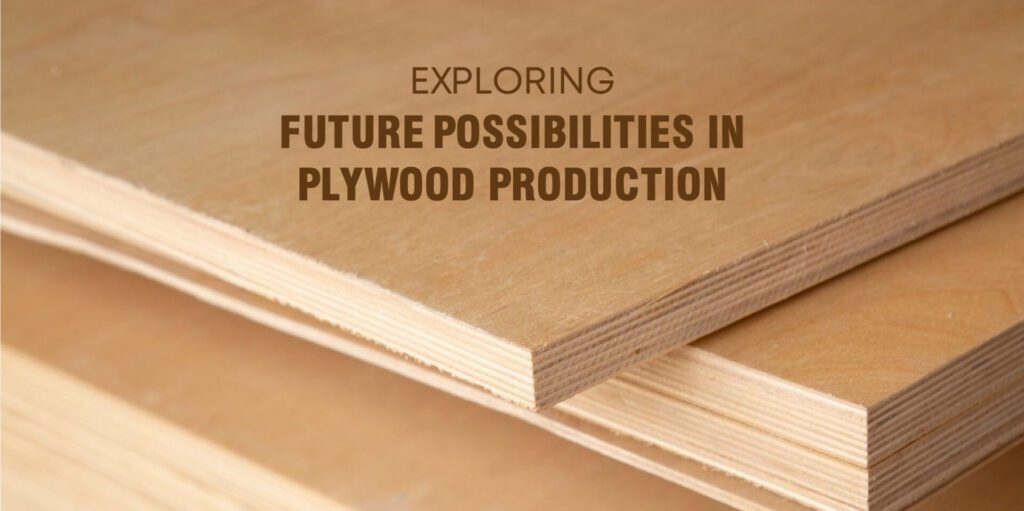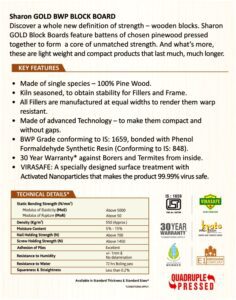

Plywood production in India is experiencing rapid growth due to a combination of factors that showcase the incredible versatility and eco-friendliness of plywood. This dynamic sector, integral to construction and furniture making, is poised for significant growth as it embraces innovation, meets evolving consumer demands and navigates challenges to foster a sustainable and prosperous future.
Whether it’s for construction purposes or furniture manufacturing, plywood is increasingly becoming the preferred option and here’s why.
Plywood is akin to a backbone in the modern construction and design world. It’s tough, adaptable, and made by bonding thin wood layers together. You can find it in everything from classic teak and oak to specialized marine plywood, catering to various needs like furniture and construction molds. Plus, its ability to handle humidity like a champ makes it perfect for modern projects.
By 2047, India is set to welcome 1.7 billion people, with roughly half of them calling urban areas home. This massive urban influx means that India will need to build around 230 million housing units by then to cater to this bustling urban population. As cities swell and evolve, plywood becomes an indispensable part of the construction and furniture sectors, meeting the demands of modern urban living. It’s fascinating to see how plywood, with its versatility, becomes a crucial player in shaping the living spaces of millions in India’s urban landscape.
Think of all the new buildings and renovations happening. Plywood is at the heart of these projects, especially with initiatives like the Pradhan Mantri Awas Yojana pushing for quality materials.
People are leaning towards eco-friendly and premium plywood options. It’s not just about durability anymore; aesthetics and sustainability are in the spotlight, shaping how plywood is made and used.
We’re talking fire-resistant, water-resistant and all-around high-tech plywood. Innovations in manufacturing are boosting productivity and pushing the boundaries of what plywood can do.
Picture advanced machines churning out top-notch plywood. These technologies are boosting productivity and pushing the boundaries of what plywood can do. By crafting innovative products that boost attributes like strength, durability and resilience against environmental factors, plywood can unlock new opportunities in the market. For instance, when we create moisture-resistant or fire-retardant plywood, we’re not just enhancing its performance; we’re opening doors to use it in even tougher conditions. These advancements are like giving plywood a superpower, making it more versatile and valuable for various applications.
India’s plywood market is set to grow by leaps and bounds, making it a global leader in quality and innovation.
Looking ahead, it’s expected that the plywood market will see a steady 5% compound annual growth rate (CAGR) between 2024 and 2032. This positive trajectory paints an optimistic picture for the industry, potentially reaching a market value of around USD 77.18 billion by the end of 2032. What’s driving this growth? Well, there’s a global uptick in construction projects, especially in emerging economies and a noticeable preference for sustainable, lightweight building materials.
But it’s not just about numbers and trends. Innovations in plywood technology are also playing a role, making strides in improving quality while reducing environmental impact. It’s a blend of market dynamics and innovation that’s shaping the future of the plywood industry.
The hurdles we’re facing in the plywood industry is the price of wood, which is our main raw material, can be all over the place due to logging restrictions, environmental policies and economic ups and downs. This can really impact our bottom line.
On top of that, meeting stringent environmental regulations adds another layer of challenge, driving up costs and sometimes slowing down production.
And of course, when the economy takes a hit, construction slows down too, affecting our demand and market position. But rest assured, we’re rolling up our sleeves and working hard to overcome these challenges and continue delivering top-quality plywood products!










Users understand that SHARONPLY is committed to protecting the User’s privacy and shall take all efforts to protect any personal data provided to the Website by reasonable security safeguards against such risks as loss or unauthorised use, destruction, modification or disclosure of data, However, in case of any lapse, SHARONPLY shall not be held responsible for any effect or consequences thereof. The Website uses cookies to track usage of the path of the User. Since most web browsers automatically accept cookies, User can edit User’s browser options to block them if User does not want the Website to use cookies to track usage of the path of the User.
SHARONPLY undertakes not to disclose, except as otherwise provided, the personal information provided by the User to any person, unless such action is necessary to: –
By filling up any form on the Website User automatically grants SHARONPLY a royalty-free, perpetual, irrevocable non-exclusive license to use, reproduce, publish, edit, distribute, and publicly display the information given in the form and to sublicense such rights.
Any queries regarding the SHARONPLY’s privacy policy, may be sent to admin@sharonply.com.

